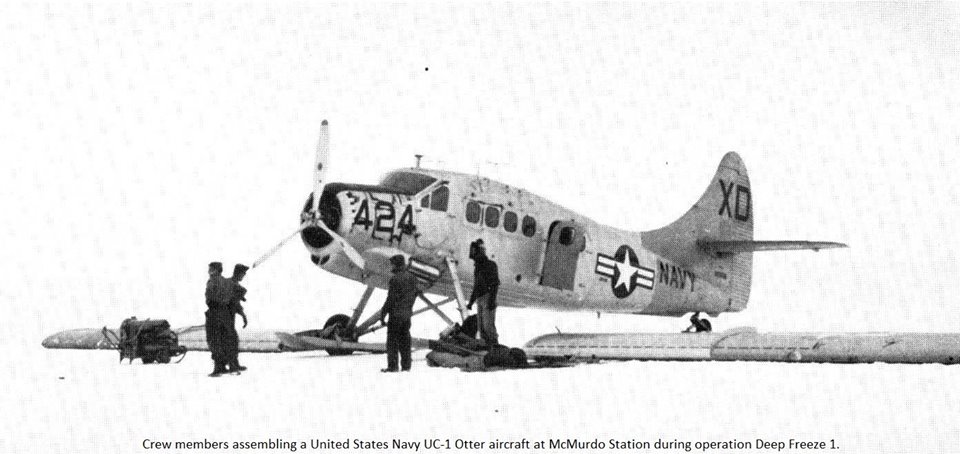
The U.S. navy in Antarctica
On 21 October 1956, the first of many US Air Force aircraft, a C‑124 nicknamed “Miss North Caroline,” landed in Antarctica after a 12½-hour flight from Christchurch, New Zealand. This flight initiated the Air Force’s participation in one of its longest running missions.
For the International Geophysical Year (IGY), the Department of Defense agreed to support the logistical requirements of the US scientists in and around Antarctica and assigned the mission, dubbed Operation DEEP FREEZE, to the US Navy.
Rear Admiral George J. Dufek, a veteran of several Arctic and Antarctic expeditions, was placed in command. With just two years to prepare, Dufek’s team needed to have five scientific stations ready no later than 1 July 1957, and two inland stations by 1958. To accomplish this they had to build a blue-ice runway.
Building the inland stations involved moving some 500 tons of equipment over 500 miles of ice to construct Byrd Base and delivering another 500 tons of equipment to the South Pole to build the Amundsen-Scott Station there.
Keep in mind that only two parties (one led by Amundsen and one by Scott) had actually been on the South Pole up to that point and the Scott expedition did not survive the return trip. So this was the first time in 45 years that the South Pole had been visited.
In a total of six flights, aircrews photographed much of Antarctica’s coastline and several points of the interior, including the South Pole and Pole of Inaccessibility.
Aircrews had accomplished nine long-range photographic missions. One of these flights discovered four new mountain ranges and proved conclusively that Antarctica was not a split landmass.
Engineers constructed main bases at Little America and McMurdo Sound as well as locating sites for another four stations. They also assembled materials for the South Pole Station at McMurdo Sound and for Marie Byrd Station at Little America II.
During the winter months, 93 men, mostly Seabee engineers but also two Air Force aerial port specialists to prepare airdrop cargo, constructed a more permanent 6,000-foot ice runway, turn-around circle, and 2,000-foot by 300-foot parking ramp, at McMurdo Sound by clearing snow from the bay ice.
Operation DEEP FREEZE I concluded on 30 March 1956 when the USS Glacier, an icebreaker, departed. Despite several injuries, two deaths (two men drove tractors into cravasses), and the loss of two aircraft, the US Navy personnel accomplished their objectives.
This Navy documentary tells their story:

